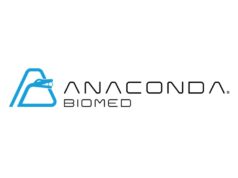The FDA announced approval of the NovoTTF-100A System (Novocure), a new device used to treat adults with glioblastoma multiforme (GBM), a form of brain cancer, which recurs or progresses after receiving chemotherapy and radiation therapy.
According to the National Cancer Institute, each year about 19,000 people in the United States are diagnosed with primary brain cancers. In 2010, there were 13,140 deaths from brain and other nervous system cancers in the United States.
Glioblastoma multiforme is the most common primary brain cancer. The brain tumor is highly resistant to standard treatments such as surgery, radiation and chemotherapy.
When using the NovoTTF-100A System, a health care professional places electrodes on the surface of the patient’s scalp to deliver low-intensity, changing electrical fields called “tumor treatment fields” (TTFs) to the tumor site. The unique shape and electrical characteristics of dividing tumor cells make them susceptible to damage when exposed to TTF, which could stop tumor growth.
The device is portable and can be powered with batteries or plugged into an electrical outlet. Patients can use the device at home, allowing them to continue their normal daily activities.
“Recurrent glioblastoma multiforme is a devastating form of brain cancer that often eludes standard treatments,” said Jeffrey Shuren, director of the FDA’s Center for Devices and Radiological Health. “The agency’s approval of the NovoTTF-100A System shows FDA’s commitment to innovative new devices that provide patients with other treatment options.”
The FDA based its approval of the NovoTTF 100A System on results from a single international clinical study in 237 patients with recurrent GBM or with GBM that had not responded to traditional therapy. Patients in the study were randomly assigned to receive either the NovoTTF-100A System or chemotherapy treatment.
The study showed comparable overall survival rates between patients treated with the NovoTTF-100A System and those who underwent chemotherapy. Patients treated with the NovoTTF-100A System experienced a slightly higher incidence of neurological side effects including convulsions and headaches compared to patients receiving chemotherapy. However, they did not experience the significant side effects associated with chemotherapy, including nausea, anemia, fatigue and serious infections.
A survey of patients in the study suggested an improved quality of life in the NovoTTF-100A recurrent GBM patients compared to patients receiving chemotherapy.
According to the FDA, patients who have an implanted medical device or a skull defect, or have a known sensitivity to conductive hydrogels, such as those used with electrocardiograms should not use the NovoTTF-100A System. This system is not intended to be used in combination with other cancer treatment and should only be used after other treatments have failed.












